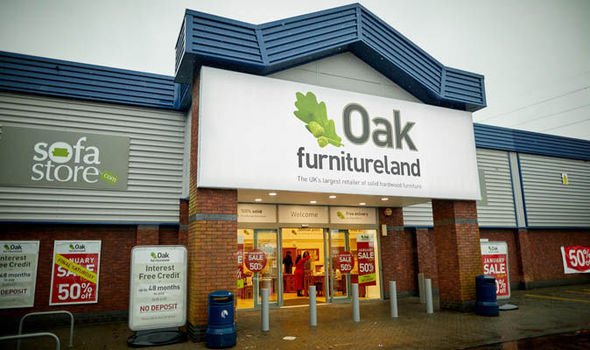
Disclaimer: As an Amazon Associate, “Furniture UK” earns from qualifying purchases.
In North America and Europe, online retail sales have continued growing. Online sales in eight countries, namely Germany, Poland, UK, Spain, Poland, Netherlands, Italy and France, increased between 2014 and 2015 from £132.05 billion to £156.67 billion. The growth trend is expected to continue, with online sales expected to hit £182.80 billion for the mentioned nations in 2016 and a whopping £215.38 billion by 2017.
North America
U.S. online sales are expected to keep growing right into 2016. From £215.38 billion in 2015, the sales are expected to grow by 14.4 per cent to a high of £246.39 billion by 2016. The Canadian online retail sector is comparatively a bit smaller regarding forecasts. It is expected to grow from £10.57 billion in 2015 to hit £14.16 billion by 2016, a percentage increase of 34 per cent. It’s worth noting that the online retail sector remains a significant driver in North American and European retail spending. In Europe, growth in online retailing grew by 18.4 per cent in 2014 and 18.6 per cent in 2015, with the 2016 growth expected to be 16.7 per cent and 15.7 per cent by 2017.
Recessionary effects
Many shoppers are buying furniture online today in contrast with traditional stores, which has been deduced as a recession-induced change. Today, web search is very predictable and manageable, which has made internet retailing one of the most attractive for various products. The growth in mobile technology is another factor that has made online retailing highly convenient and beautiful worldwide.
The online market in Europe has been dominated by key players, namely France, Germany and the United Kingdom, which contribute to 81.5 per cent of the online retail sales in Europe across Poland, Sweden, Netherlands, Italy, Spain, France, Germany and the U.K.
Online retail market shares
The market shares across Europe were comparatively low if you didn’t consider Germany and U.K. markets in 2015. The market share in Europe stood at 7.2 per cent in 2014 and 8.4 per cent in 2015, with the 2016 percentage mean expected to stand at about 9.4 per cent. In 2010, 9.4 per cent was the online share of the United Kingdom and currently stands at 16.8 per cent. As such, the European rate of growth has been fast, comparatively.
Among the top countries in terms of online shares within their markets include Germany, with a 2016 forecast of 13.5 per cent; the U.K., with 16.8 per cent for 2016 and France, with a 2016 forecast of 9.4 per cent. Netherlands and Sweden also have higher market shares, although Germany has enjoyed the fastest online sector growth for the last few years. However, Germany’s 2016 forecast online retail sector growth of 18.3 per cent is expected to lose to Spain’s 18.8 per cent.
In contrast to Europe, the United States remains the online retailing leader. Among the eight nations surveyed, about 62.3 per cent of the U.S. public were online shoppers to Europe’s 49.6 per cent in 2015. While the typical U.S. online shopper spent approximately £1,119.79 in 2015, the average European online shopper spent £820.05 on average.
Mobile e-commerce
The growth of online retailing cannot be separated from mobile technology and mobile-responsive e-commerce. Many retailers have reported that about 70 per cent to 80 per cent of internet browsing on their sites occurs through mobile devices for tablets and Smartphones. By 2015, about 20 per cent of web spending across Europe took place through mobile devices, as much as the mobile e-commerce proportions across Europe stood at 26.2 per cent in Sweden, 27.7 per cent in Germany and 28.6 per cent in the U.K.
In web retailing, increased sales through mobile devices are one of the reasons the sales have gone up, about 88 per cent in Europe; laptop and PC-based online growth stood at only 6 per cent.
77 per cent of internet users in the U.K. were found to have made online purchases in 2015, making it a leading online market in Europe. Of the entire 64.91 million U.K. population, 92 per cent are web users, meaning that e-commerce has a massive potential across England. This is why most U.K. retailers have adopted e-commerce in their growth strategies taking cues from giant e-commerce players such as Amazon and eBay. These U.K. retailers include Asos, Argos, Next, Tesco, John Lewis, Marks & Spencer, IKEA and B&Q.
Traditional stores and online sales
Marketing analysts say online sales growth will lower the traditional store market. If domestic retail hits 5 per cent in online sales, it’s expected to come at the expense of conventional stores. The growth forecast for online railers in Europe is expected to be 16.7 per cent, if the retail market remains stagnant.
As a result, the store sales are expected to dip by 1.5 per cent in total in 2016 and 4.3 per cent across the United Kingdom and 2.2 per cent in the United States. As such, it creates significant issues for retailers who work chiefly through stores; policymakers also look at the results showing reduced direct employment within the retail sector.




![Report on the British educational furniture manufacturers group [BEFMG]](https://thehome.co.uk/wp-content/uploads/2018/02/report-furniture-uk.jpg)



